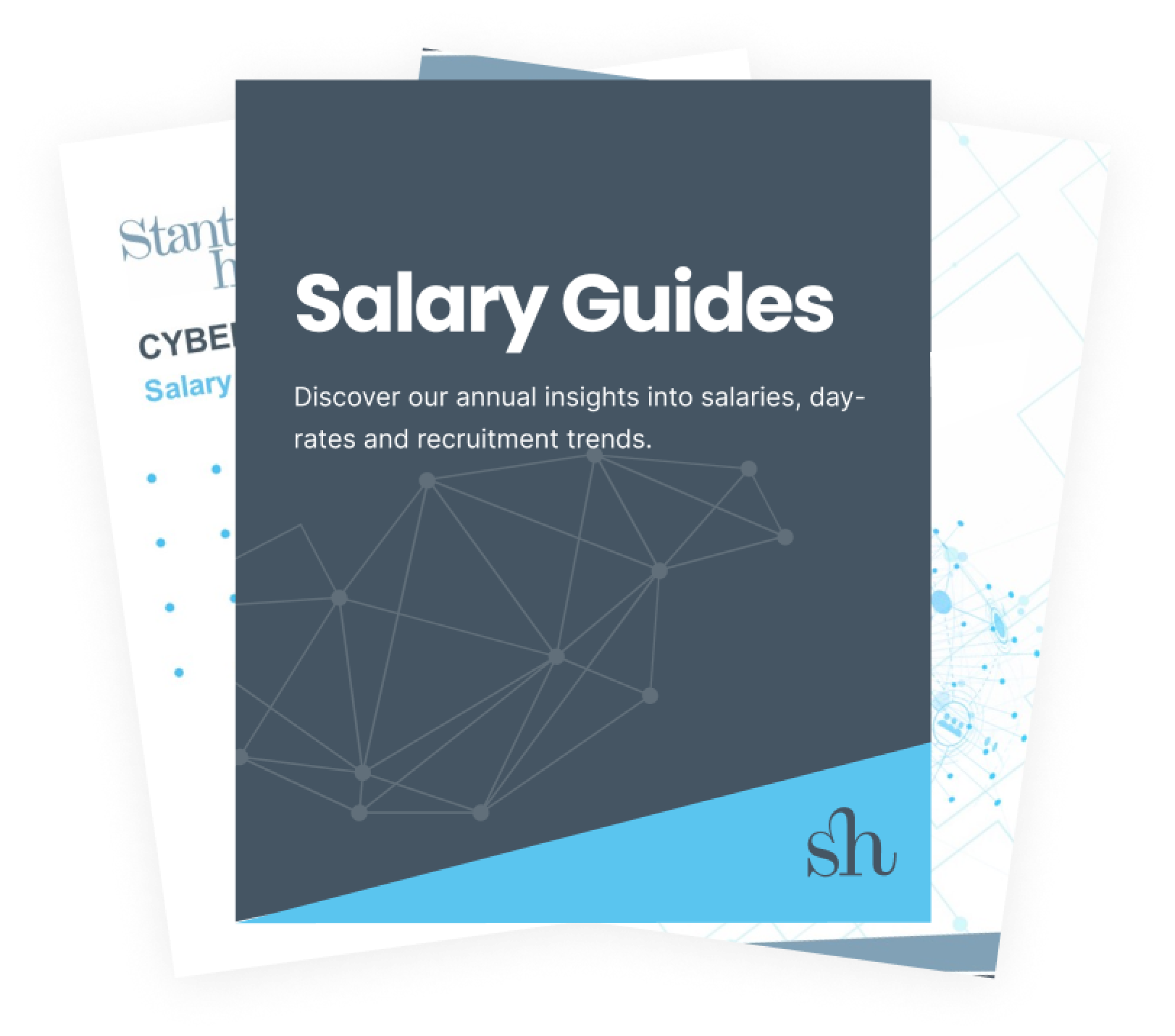
The Hidden Costs of a 'Lift-and-Shift' ERP Strategy
When organisations invest in a new ERP system, it's rarely just about the technology. It's about enabling growth, improving efficiency, and future-proofing operations. Yet, too often, I see businesses fall into the trap of treating ERP implementation as a purely technical project – opting for what's known as a ‘lift-and-shift’ approach. On paper, this might look cost-effective and lower-risk. In reality, it can be a false economy.
As a specialist in Transformation recruitment at Stanton House, I work closely with CFOs, CIOs, and Programme Directors across the UK. I hear the same stories time and again: "We did a lift-and-shift to get the system live quickly, and now we're stuck with processes that don’t support the business." This article is a deeper dive into why that happens, what hidden costs leaders often overlook, and how talent plays a critical role in making ERP strategy a long-term success.
What Is a Lift-and-Shift ERP Strategy?
At its core, a lift-and-shift ERP implementation means replicating existing processes in the new system with minimal changes. The focus is on getting the technology live quickly, without re-engineering the underlying ways of working. It typically involves limited stakeholder engagement, compressed timelines, and a drive to "keep it simple."
In contrast, a transformation-led ERP programme considers how the system can enable new ways of working, better data, improved decision-making, and cultural change. It’s slower, more complex, and more expensive upfront – but it aims for sustainable value creation.
The Illusion of Cost Savings
From a budget holder's point of view, lift-and-shift is attractive because it appears cheaper:
- Reduced consulting and integration costs
- Faster implementation timelines
- Minimal disruption to business operations
But here's the reality: when you don’t invest in redesigning processes, aligning the system to business strategy, or upskilling your people, the "savings" become costs further down the line. These costs are harder to measure, but they are real and often significant. A 2023 study by Panorama Consulting Group reported that the average ERP implementation cost exceeds $625,000, with many projects incurring additional unplanned costs due to poor planning or unrealistic assumptions.
Hidden Cost #1: Inefficiency and Workaround
ERP systems are supposed to streamline operations. But when you copy legacy processes that were never optimised in the first place, you risk building inefficiency into the new system. Users revert to manual workarounds, Excel trackers, or shadow IT.
One CIO I worked with recently described it perfectly: "We replaced our system, but not our behaviours."
The cost? Lost productivity, inconsistent data, and increasing technical debt. More importantly, it erodes user confidence in the system.
Hidden Cost #2: Missed Strategic Value
ERP systems are powerful enablers of transformation. A well-executed programme can provide:
- Real-time data for better decision-making
- Standardised processes across global entities
- Stronger governance and compliance
- Scalability for growth and M&A
A lift-and-shift rarely delivers this. Because it’s not designed to.
I’ve seen finance leaders regret not taking the opportunity to move from localised reporting to a global chart of accounts or not automating key controls. That window doesn’t stay open forever. Once the system is live, appetite (and budget) for big change disappears.
Hidden Cost #3: Talent Drain and Change Fatigue
Perhaps the most overlooked cost is the human one. Employees who were frustrated with old systems are now disillusioned by the new one. Why? Because the process pain points haven’t gone away.
Engaged users become disengaged. Superusers lose credibility. Adoption suffers.
In many cases, experienced staff leave within 12-18 months of go-live. I’ve had clients call me post-implementation in panic because their key finance or operations leads have resigned, citing burnout and frustration. The recruitment market is tight enough as it is – you don’t want to add avoidable attrition to your list of challenges.
Hidden Cost #4: Unplanned Post-Go-Live Fixes
Because lift-and-shift projects deprioritise process redesign and testing, issues often surface after go-live:
- Broken integrations
- Poor data migration
- Confused user roles and permissions
- Regulatory compliance risks
Fixing these post-go-live is not only expensive but also disruptive to BAU. I’ve seen companies spend 2-3x more on stabilisation and optimisation phases than they originally saved by going lean on the implementation.
Why Do Businesses Still Choose Lift-and-Shift?
In my experience, it often comes down to:
- Budget pressure
- Board-level impatience for results
- Underestimating complexity
- Lack of internal ERP experience
It’s also a talent issue. Organisations without experienced Programme Directors, Change Managers, or ERP-savvy Finance Leads are more likely to default to the path of least resistance.
How Talent Can Shift the Equation
This is where Stanton House plays a critical role. We help clients build the right programme teams with the right blend of:
- Strategic leadership (Programme Directors who can manage scope and stakeholder expectations)
- Process specialists (who understand the difference between automation and replication)
- Change and comms experts (who build trust and engagement across the business)
- Functional leaders (who are both operationally credible and transformation-minded)
The difference between a successful ERP transformation and a costly lift-and-shift often comes down to who is in the room at the start of the journey.
What Good Looks Like
I recently worked with a retail client who made the conscious decision to invest in a full transformation-led SAP S/4HANA programme. Yes, it took longer. Yes, it cost more. But they now have:
- Automated P2P and O2C processes
- Embedded ESG tracking in finance reporting
- Full visibility of stock and supply chain risk
- Delighted users who trust the system
Most importantly, they have a scalable platform that supports their 5-year growth plan.
Industry Insights & Trends
The ERP landscape is shifting rapidly. A few key trends to be aware of:
- Cloud-first ERP: Gartner forecasts that by 2026, 60% of ERP deployments will be cloud-based, compared to 30% in 2023. Cloud ERPs offer flexibility but require a deliberate process and change design to avoid replicating old problems in a new environment.
- AI and automation: Modern ERP vendors are embedding AI and ML capabilities for forecasting, anomaly detection, and decision support. These tools are powerful but underutilised in lift-and-shift implementations.
- Leadership gaps: Deloitte’s 2024 Human Capital Trends report noted that 78% of organisations see a gap in leadership's digital and transformation fluency. That gap is amplified during ERP change programmes.
- Finance function priorities: According to PwC’s 2024 Finance Effectiveness Benchmarking report, 72% of CFOs prioritise better data, automation, and efficiency in ERP investment strategy – all of which require more than just a technical go-live.
Case Studies: Lessons from the Field
- Nike: A rushed ERP deployment in 2000 led to $100m in lost sales and a stock dip. The issue? Poor demand forecasting and lack of testing.
- Hershey's: In 1999, ERP go-live issues left them unable to fulfil $100m in Halloween orders. The business impact was substantial.
- Lidl: After 7 years and over €500m invested, Lidl abandoned its ERP project due to incompatibility with business processes – a classic lift-and-shift trap.
Final Thoughts
A lift-and-shift ERP strategy might feel like the safe option. It might get you live on time and on budget. But if it doesn’t deliver value, if it doesn’t solve real business problems, and if it drains your top talent – was it really the right choice?
If you’re a CFO, CIO or Transformation Leader weighing up your ERP strategy, my advice is simple: think beyond go-live. The success of your implementation depends not just on the software you choose, but the people you put around it.
Interested in attending our upcoming event: "Technical Implementation vs. Full Transformation: Choosing the Right ERP Strategy for Long-Term Success"? Get in touch to reserve your place.


















